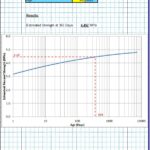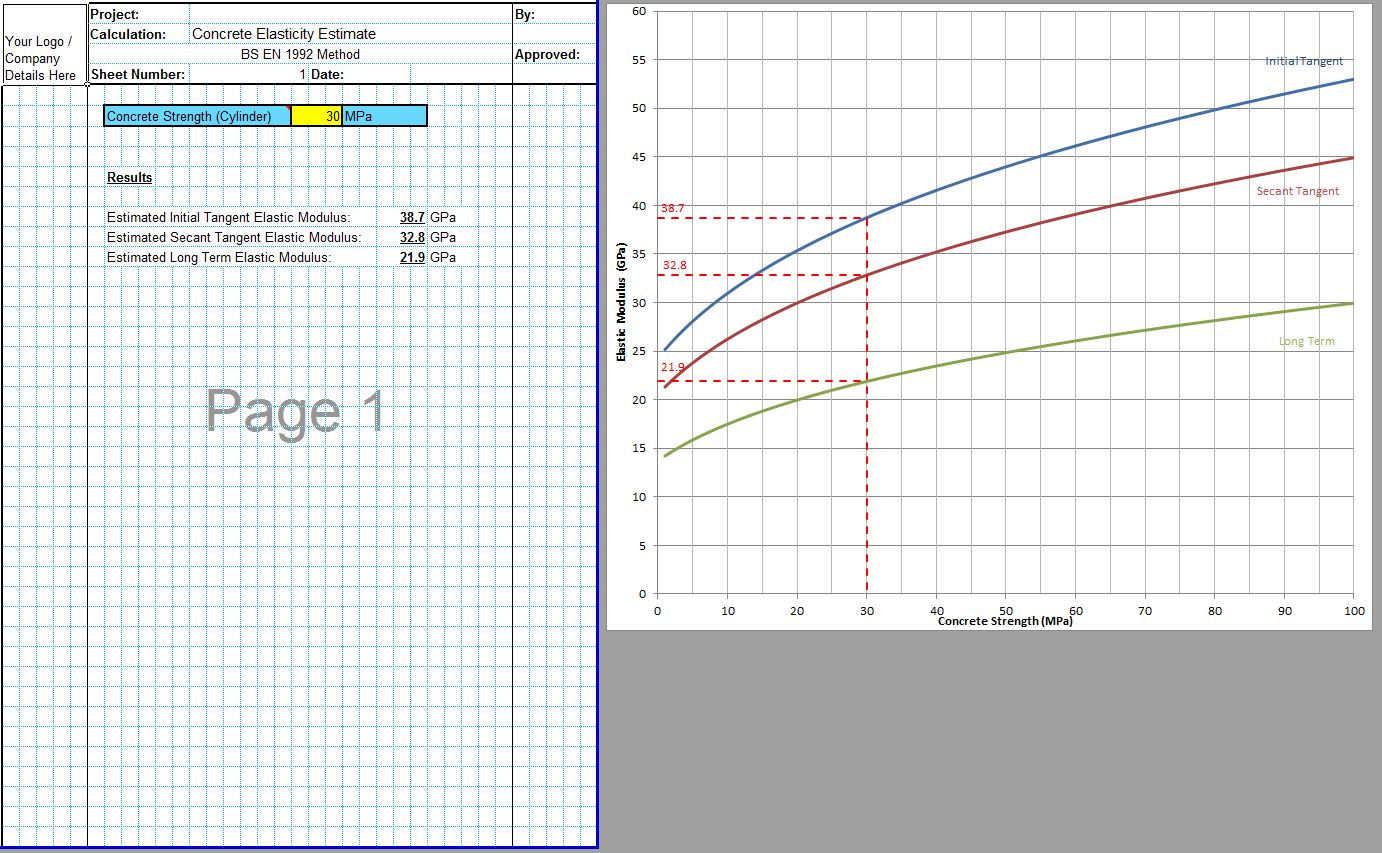The flexural strength of concrete describes its ability to resist flexural loads. This is sometimes referred to as the modulus of rupture of the concrete. This is the main design parameter for plain concrete loaded in bending, such as in concrete pavements.
For reinforced concrete this parameter is not usually applicable as reinforced concrete acts as a composite material with the reinforcement steel resisting the tensile forces and the concrete resisting the compressive forces. There are some applications where plain concrete resists loads in flexure where the flexural strength is important. This is most commonly the case in ground supported concrete slabs, roads and pavements which are not usually reinforced with steel for structural reasons.
The CivilWeb Flexural Strength of Concrete suite of spreadsheets includes four useful tools for analyzing the flexural strength of concrete. This includes a spreadsheet analyzing the maturity and flexural strength gain of concrete and three spreadsheets used to estimate flexural strength from the compressive strength, the tensile strength or the elastic modulus. This spreadsheet is available for only £5 and can be purchased at the bottom of this page. Further details on these spreadsheets is included below.
Design Flexural Strength of Concrete Values
As stated above the most common application for the flexural strength of plain concrete is in concrete roads and pavements. This is the focus of the below details though the principles can be applied to any application of unreinforced or fibre reinforced concrete.
The design flexural strength for roads and pavements is generally between 3.5MPa and 5.0MPa. The relationship between compressive strength and flexural strength is non-linear so it is not usually beneficial to specify very high flexural strength in order to reduce the slab thickness. This will increase the overall costs and introduce the difficulties of dealing with high strength concretes (as detailed in our Compressive Strength of Concrete post) without much benefit in flexural strength.
Factors Affecting Flexural Strength of Concrete
The most important factor directly affecting the flexural strength of the concrete is the type of aggregates used. Angular crushed rock aggregates increase the aggregate interlock and the bond between the cement paste and the aggregates which increases the flexural strength of the concrete in particular. Other ways of increasing the flexural strength of the concrete are the same as for the compressive strength, again subject to the principle of diminishing returns due to the non-linear relationship between compressive strength and flexural strength.
Flexural Strength Test of Concrete
The flexural strength of concrete can be measure using a third point flexural strength test. This flexural test of the concrete measures the flexural strength of a beam of concrete either cast as a sample or sawn from a concrete member or pavement. This test is expensive and difficult to perform and is not very accurate. A detailed discussion is included in our Flexural Test post.
Relationship Between Flexural Strength and Compressive Strength of Concrete
As discussed above the relationship between the compressive and flexural strength of concrete is an important one in concrete road and pavement design. Because the flexural test of concrete is so difficult to conduct it is common for the compressive strength to be specified and tested as a proxy for the flexural strength. The CivilWeb Flexural Strength Calculator suite includes a useful tool for estimating the flexural strength of the concrete from the compressive strength. This is explained in detail in our Compressive Strength to Flexural Strength Conversion post.
Flexural Strength Maturity
The flexural strength of the concrete matures in a similar manner to the compressive strength. This strength gain can be accounted for in the design by estimating the strength of the concrete at various stages in its design life. An empirical equation has been developed to estimate the flexural strength of concrete at any time in its life.
This equation relates the ratio of the flexural strength of the concrete at 28 days to its strength at any age (input in years). Each concrete mix will age in a slightly different manner, however the above can be used as a rough estimate of any concrete mix. The mix must be tested if this value is to be incorporated into a design as a critical parameter.
CivilWeb Flexural Strength of Concrete Spreadsheet
A flexural strength maturity calculator is included in the CivilWeb Flexural Strength Calculator suite. This useful tool uses the above equation to estimate the flexural strength of the concrete at any age. This can be used to check the construction programme is suitable where early age loadings are anticipated. It can also be used to check the validity of early age flexural strength tests. This spreadsheet costs only £5.
Our full Concrete Properties Suite of spreadsheets is available for only £10.
Download Free Trial Version
To try out a fully functional free trail version of this software, please enter your email address below to sign up to our newsletter.













